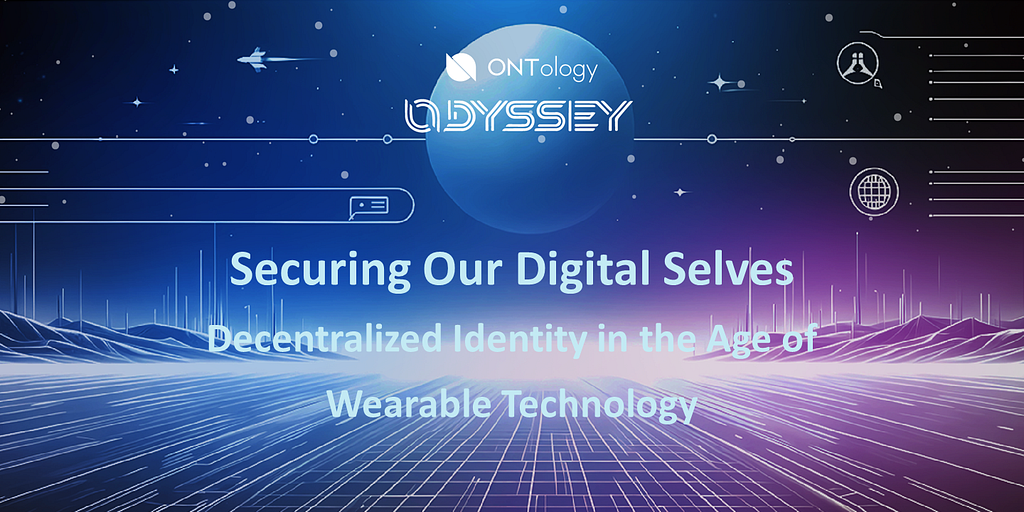Securing Our Digital Selves
0
0
Decentralized Identity in the Age of Wearable Technology

The rise of wearable technology, as detailed by Luis Quintero in his insightful article on The Conversation, presents an exciting yet daunting evolution in how we interact with digital devices. Wearables now extend beyond fitness trackers to include devices capable of monitoring a broad spectrum of physiological data, from heart rates to brain activity. While these devices promise enhanced personal health monitoring and more immersive digital experiences, they also raise significant privacy concerns. This piece aims to explore how decentralized identity (DID) can provide robust solutions to these concerns.
Wearable devices are now becoming a more significant element in this discussion due to their ability to collect continuous data, without the wearer necessarily being aware of it. — Read the full article by Luis Quintero on The Conversation
Continuous and Invasive Data Collection
Quintero adeptly highlights the dual-edged nature of wearable technologies: while they offer personalized health insights, they also pose risks due to the continuous and often non-consensual collection of personal data. This data collection can become invasive, extending into areas we might prefer remained private.
Decentralized Identity Response:
Decentralized identity systems empower users by ensuring they maintain control over their personal data. Through DIDs, users can effectively manage who has access to their data and under what conditions. For instance, they could grant a fitness app access to their workout data without exposing other sensitive health information. This selective sharing mechanism, enforced through blockchain technology, ensures data privacy and security by design.
The Exploitation of Sensitive Data
The potential for exploiting personal data collected by wearables for commercial gain is a pressing issue. Without stringent controls, companies could misuse this data, affecting user privacy and autonomy.
Decentralized Identity Response:
Implementing DIDs can safeguard against such exploitation. By using encryption and blockchain, each user’s data remains securely under their control, accessible only through permissions that they can grant or revoke at any time. This approach not only secures data against unauthorized access but also provides a transparent record of who accesses the data and for what purpose.
Enhanced AI Capabilities and Privacy Risks
As AI integrates more deeply with wearable technologies, the scope for analyzing this data expands, leading to enhanced capabilities but also increased privacy risks.
Decentralized Identity Response:
DIDs can mitigate these risks by enabling the creation of anonymized datasets that AI algorithms can process without accessing directly identifiable information. This allows users to benefit from advanced AI applications in their devices while their identity and personal data remain protected.
Addressing Emerging Technologies
With wearable technologies becoming capable of more deeply intrusive monitoring — such as tracking brain activity or emotional states — the need for robust privacy safeguards becomes even more critical.
Decentralized Identity Response:
The flexibility of DIDs is key here. They allow users to set specific, context-based permissions for data access, which is essential for technologies that monitor highly sensitive physiological and mental data. Users can ensure that their most personal data is shared only when absolutely necessary and only with entities they trust explicitly.
Conclusion: Empowering Users Through Decentralized Identity
The integration of wearable technology into our daily lives must be approached with a strong emphasis on maintaining and enhancing user privacy. Decentralized identity offers a powerful tool to achieve this by putting control back in the hands of users, thus enabling a future where technology serves humanity without compromising individual privacy.
As we move forward, it is crucial for policymakers, technology developers, and consumers to come together to support the adoption of decentralized identity solutions. By fostering an environment where privacy is valued and protected, we can ensure that the advancements in wearable technology will enhance our lives without endangering our personal information.
Join Us in Shaping the Future with Decentralized Identity
Interested in solving the complex privacy challenges such as those posed by wearable technology? We invite you to join Ontology’s $10 million initiative aimed at fostering innovation in decentralized identity. Help us empower users to take control of their data in an increasingly connected world.
Apply to the Fund: If you have ideas or projects that advance decentralized identity solutions, we want to hear from you. Learn more and submit your proposal here.
Securing Our Digital Selves was originally published in OntologyNetwork on Medium, where people are continuing the conversation by highlighting and responding to this story.
0
0





